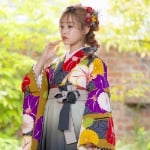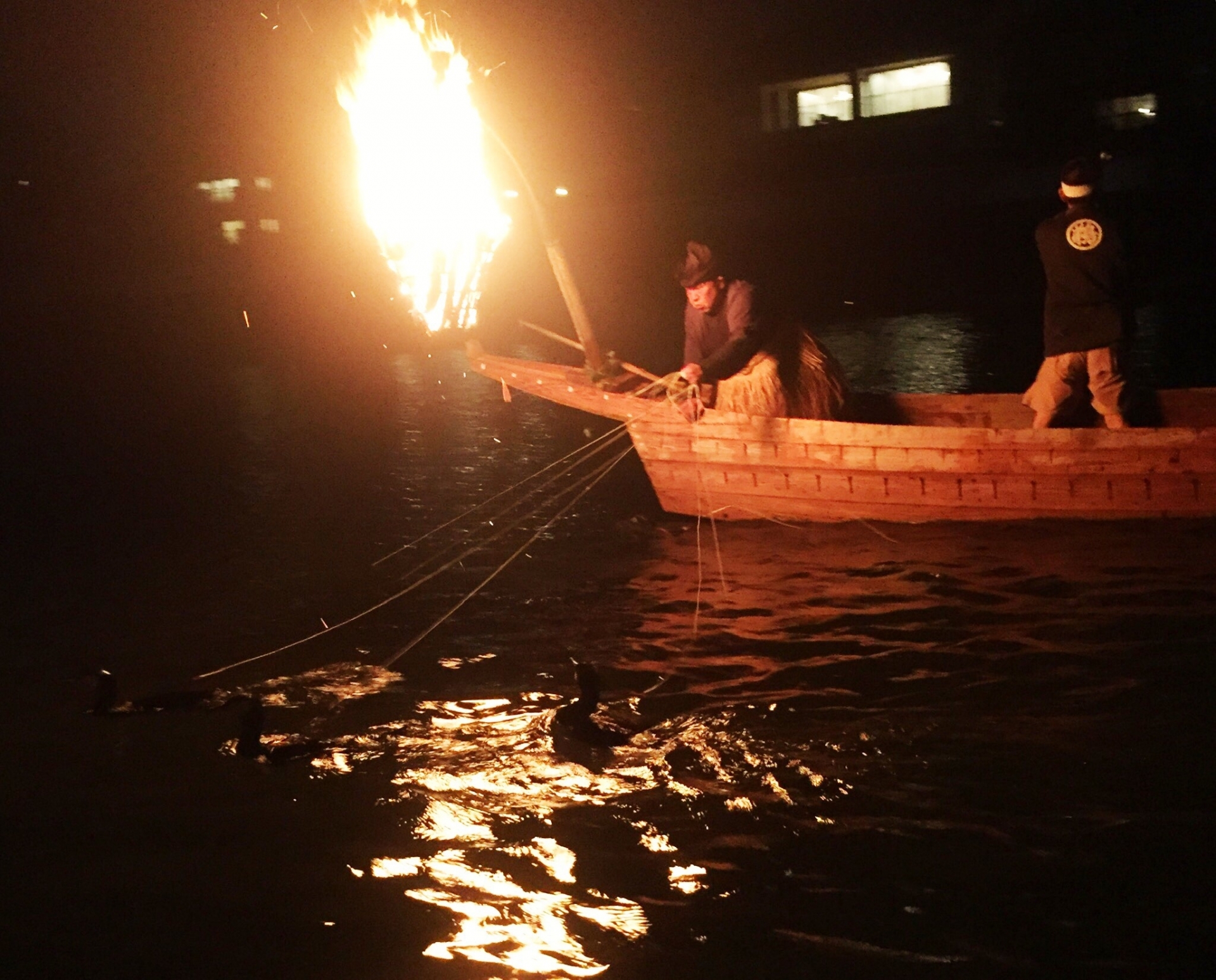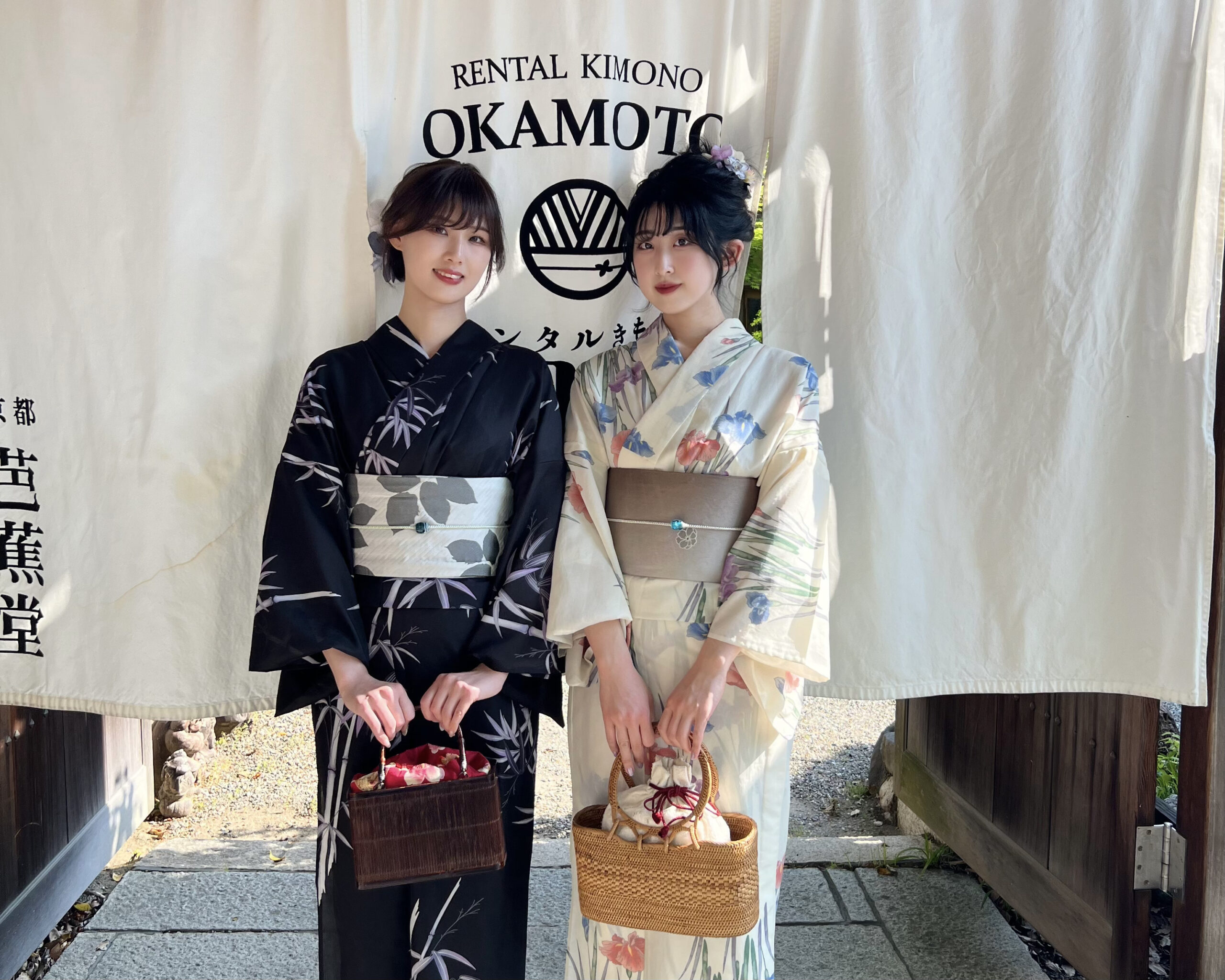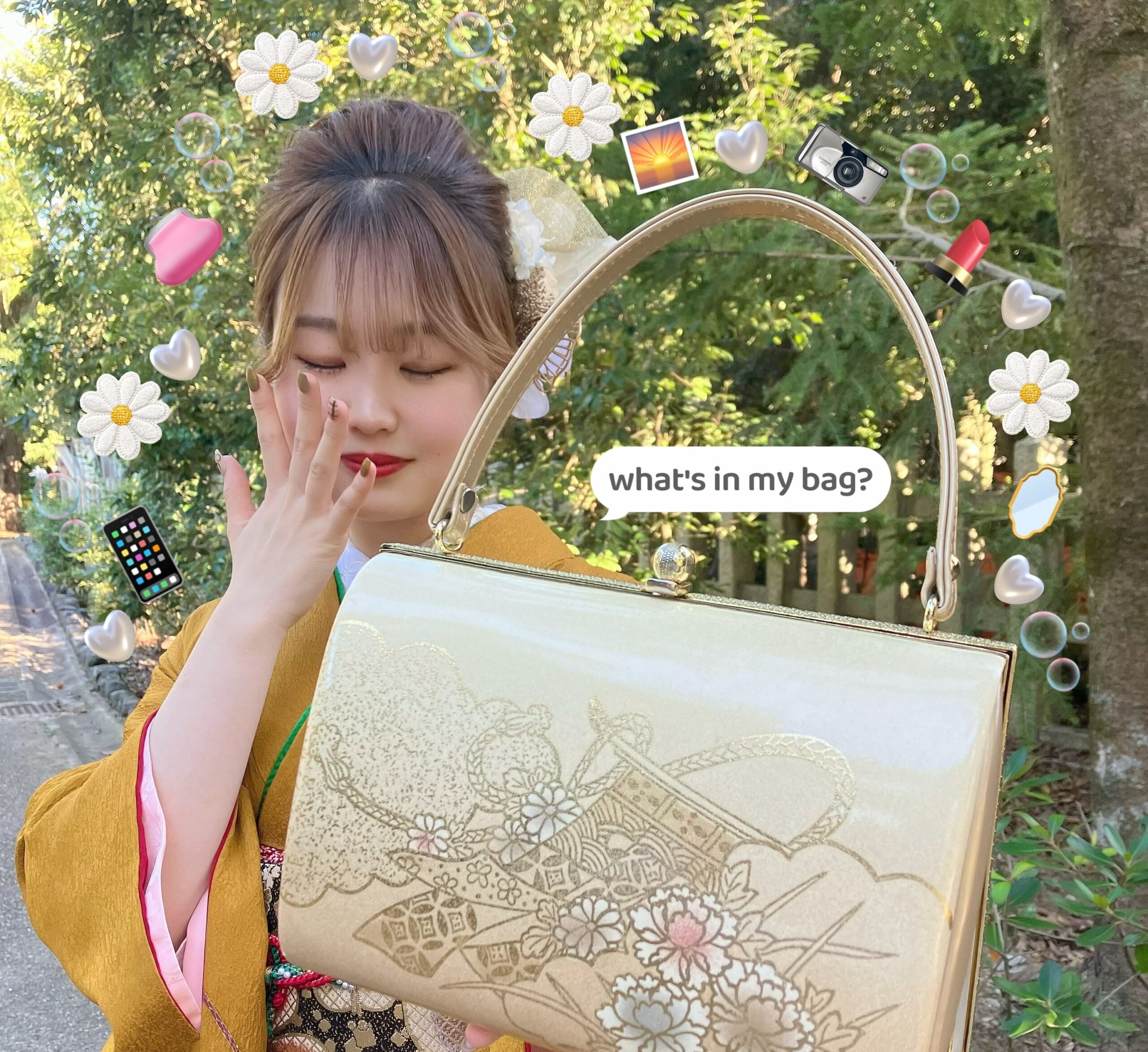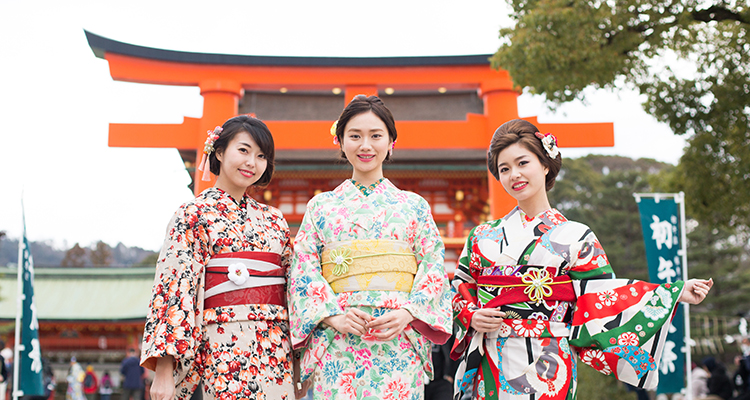
special fearure・column
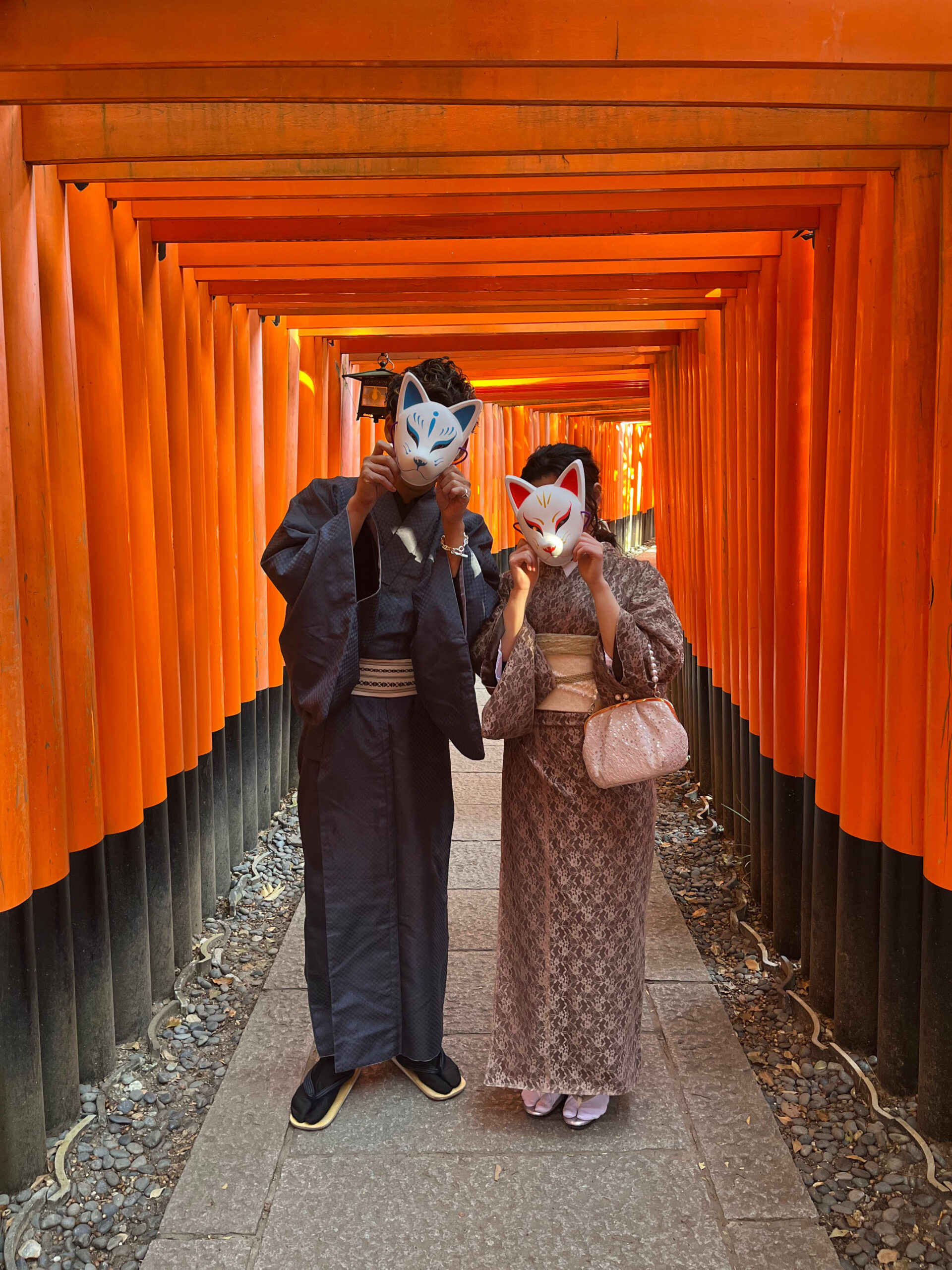
Ten recommended date courses from Fushimi Inari Shrine!
- Recommended Date Course 1 from Fushimi Inari:
- Fushimi Inari-taisha shrine
- Recommended Date Course 2 from Fushimi Inari: Gokonomiya-shrine
- Gokonomiya-shrine
- Recommended Date Course 3 from Fushimi Inari: Fushimi Jikkoku-Bune
- Fushimi Jikkoku-Bune Boat
- Recommended Date Course 4 from Fushimi Inari:
- Gekkeikan Okura Memorial Museum
- Recommended Date Course from Fushimi Inari 5 : KIZAKURA
- Kizakura
-
-
-
-
- Recommended Date Course 8 from Fushimi Inari: Fushimi Minato Park
- Fushimi Minato Park
- Recommended Date Course 9 from Fushimi Inari: Jonan-gu Shrine
- Jonan-gu Shrine
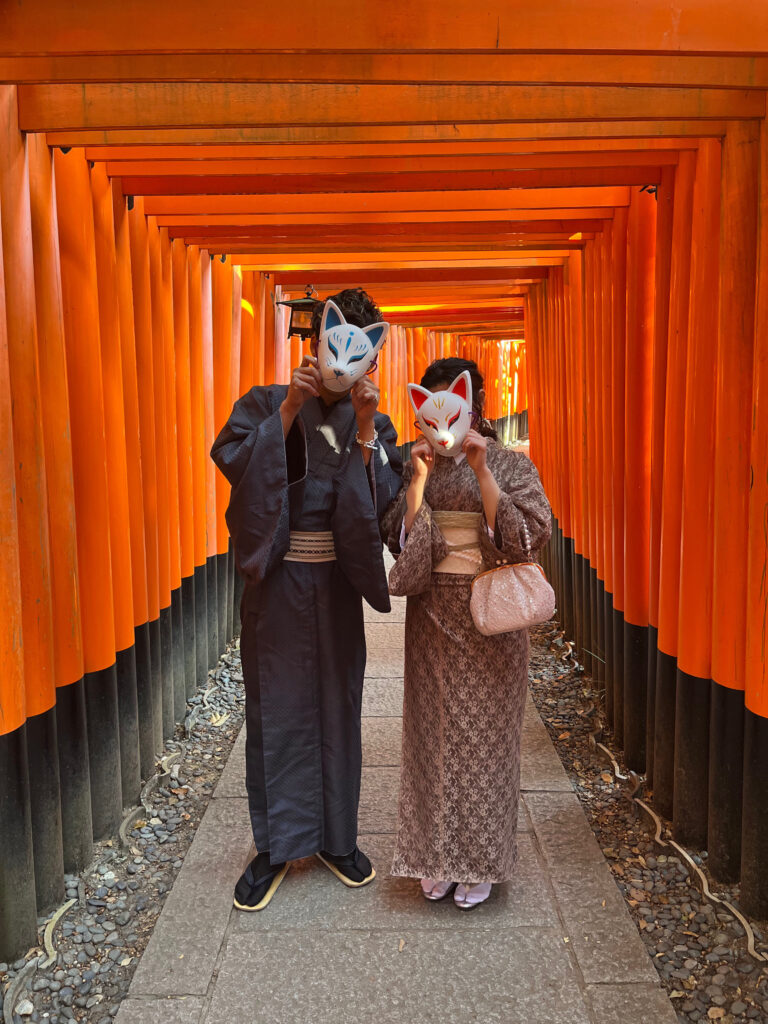
This time we would like to show you a recommended date course in Fushimi that you can visit in a day from our rental kimono Fushimi Inari store.
Fushimi has always had beautiful water, so there are many shrines and places related to water.
This is a bit of a mature date course, but we will introduce you to some classic spots as well as some newer spots.
Recommended Date Course 1 from Fushimi Inari:
Fushimi Inari Taisha Shrine
Fushimi Inari-taisha shrine
Speaking of Fushimi Area…Fushimi Inari Taisha Shrine! It's such a classic spot that people definitely associate it with Fushimi!
It is only a 3 minute walk from the rental kimono Okamoto Fushimi Inari store!
You will get there by browsing the many souvenir shops.
The famous Senbon-torii (1,000 torii gates) is a great place to take pictures.
It is also fun to make a wish at the Omokaru-ishi stone!
Lift the stone gently with both hands while making a wish, and if it is lighter than you guessed, your wish may come true!
There are two Omokaru-ishi stone, both handmade by craftsmen, so the weight is a little different on each side.
Which one you would choose… that is also a matter of luck!
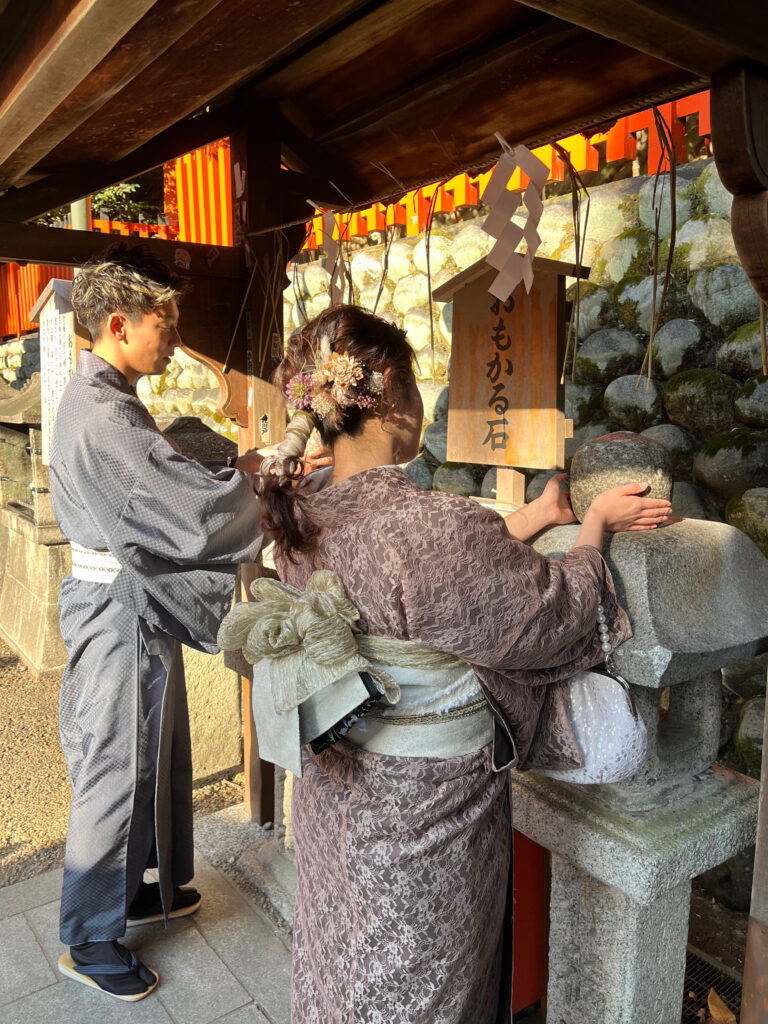
Recommended Date Course 2 from Fushimi Inari: Gokonomiya-shrine
Gokonomiya-shrine
Kyoto has clean river water, and Fushimi in particular has many famous springs.
In the Heian period (794-1185), fragrant water gushed out from the shrine grounds, and the name “Gokonomiya” was given by Emperor Seiwa (794-1185).
Famous shoguns also used the water as a birth water, and many people bring it back to their homes for tea ceremony and calligraphy as a sacred water.
It is said that taking some home and using it for tea and cooking may bring good luck.
From Fushimi Inari Station, take the Keihan train for 15 minutes. A 5-minute walk from Fushimi Momoyama Station.
Recommended Date Course 3 from Fushimi Inari: Fushimi Jikkoku-Bune
Fushimi Jikkoku-Bune Boat
How about enjoying the scenery on a small boat?
The Fushimi Jujikkoku-bune operates every spring when the cherry blossoms are in full bloom.
Originally, the boats carried sake, rice, and tourists along the Yodo River during the Edo period (1603-1867).
The now revived jikkoku boats make a round trip in about 50 minutes along the Uji River, where sake breweries can be seen on both sides of the boat.
You can enjoy cherry blossoms in spring, willows in summer, and autumn leaves in fall, and if you ride in a kimono, it will be like stepping back in time to the Edo period. You will surely want to take many pictures.
You can disembark at the Misu Locks and visit the “Misu Koumon Museum” to see an exhibition on how the canal works, so it is nice that you are not sitting all the time.
Each season is different, so it is recommended to visit in a different season.
From Fushimi Inari Station, take the Keihan train for 15 minutes. 5 minute walk from Chushojima Station.
Recommended Date Course 4 from Fushimi Inari:
Gekkeikan Okura Memorial Museum
Gekkeikan Okura Memorial Museum
The departure and arrival point for the jikkoku-bune boats mentioned earlier is along the river behind this Gekkeikan Okura Memorial Museum.
After enjoying the exterior of the museum, you can visit one of the most famous sake breweries in Japan to learn about the history and culture of sake, the development of sake brewing, and the challenges that have been taken on by the spirits, and enjoy tasting a variety of sake made from the underground water nurtured by the nature of Fushimi!
The inside of the large sake brewery is also a sight to behold, with its cool old-fashioned thick beams.
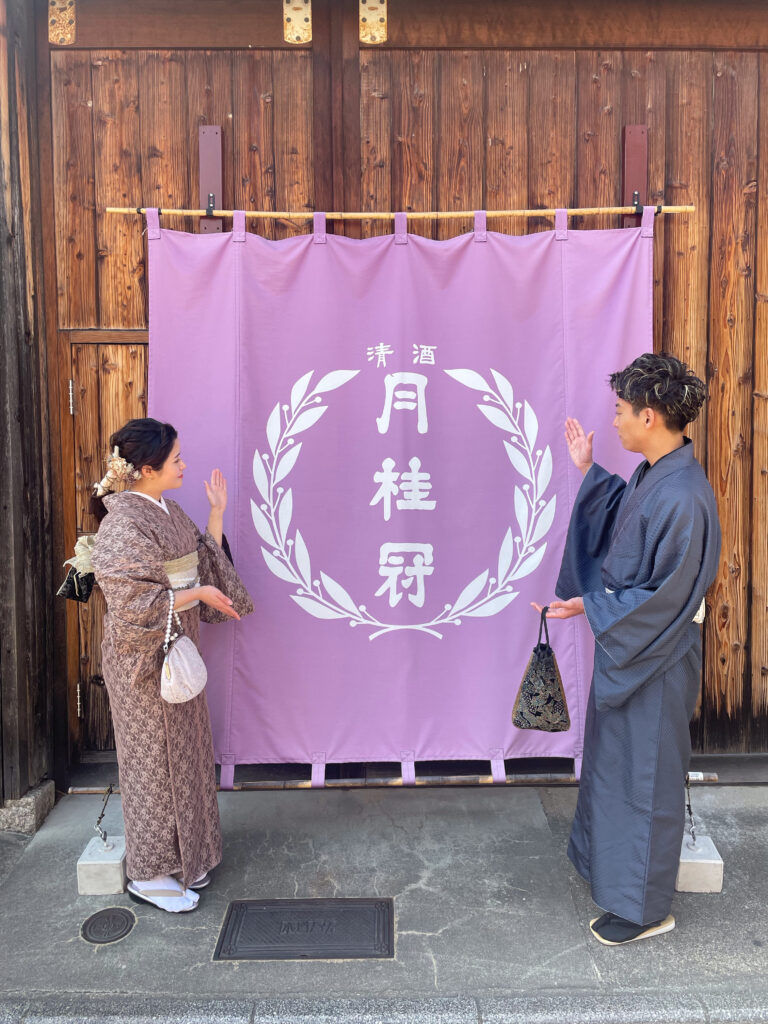
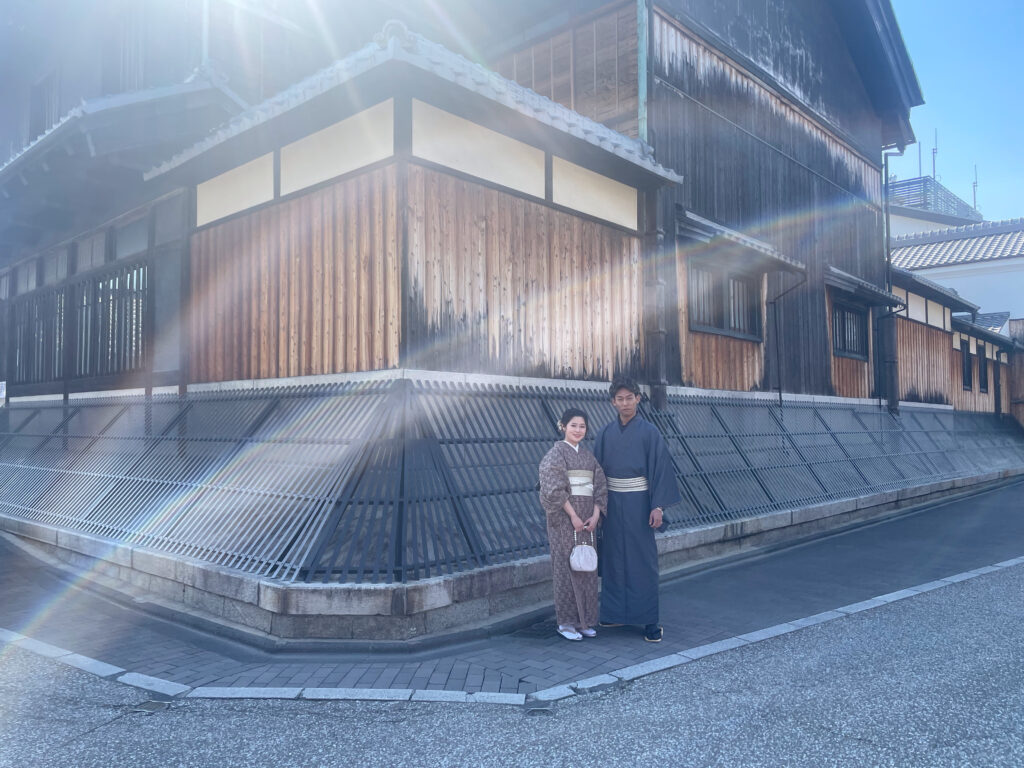
If alcohol is not your thing, we recommend the cafe “Fushimi Yume Hyakushu” located a minute's walk away.
The cafe is housed in the former headquarters of Gekkeikan, built in 1919, and offers sake manju and sake baumkuchen made with junmai daiginjo sake, along with mizudashi coffee and tea brewed with Fushimi's famous water.
The interior of the store is of course retro and definitely photo-worthy!
Please be healed by the sweet food and the wonderful atmosphere♪
15 minutes by Keihan train from Fushimi Inari Station. 5 minute walk from Chushojima Station.
Recommended Date Course from Fushimi Inari 5 : KIZAKURA
Kizakura
A 6-minute walk from the Gekkeikan Okura Memorial Museum, which I have just introduced to you.
There is a yellow cherry tree famous for the song “KappappappaRumpappa~Kappa Yellow Cherry Blossom Kappappappa~~~”.
Is this song only in Kansai?
Lunch is available on Saturdays, Sundays, and holidays. (Reservations required).
With lunch, you can compare the sake that can only be drunk here.
You can also enjoy sake highballs, sake cocktails, fruit wine, and many other types of sake.
We also recommend the “Kyoto Barley Wine” made with Fushimizu (water from the Fushimizu River in Kyoto)!
If you don't like alcohol, don't worry, amazake and non-alcoholic drinks are also available.
15 minutes by Keihan train from Fushimi Inari Station. 7 minute walk from Chushojima Station.
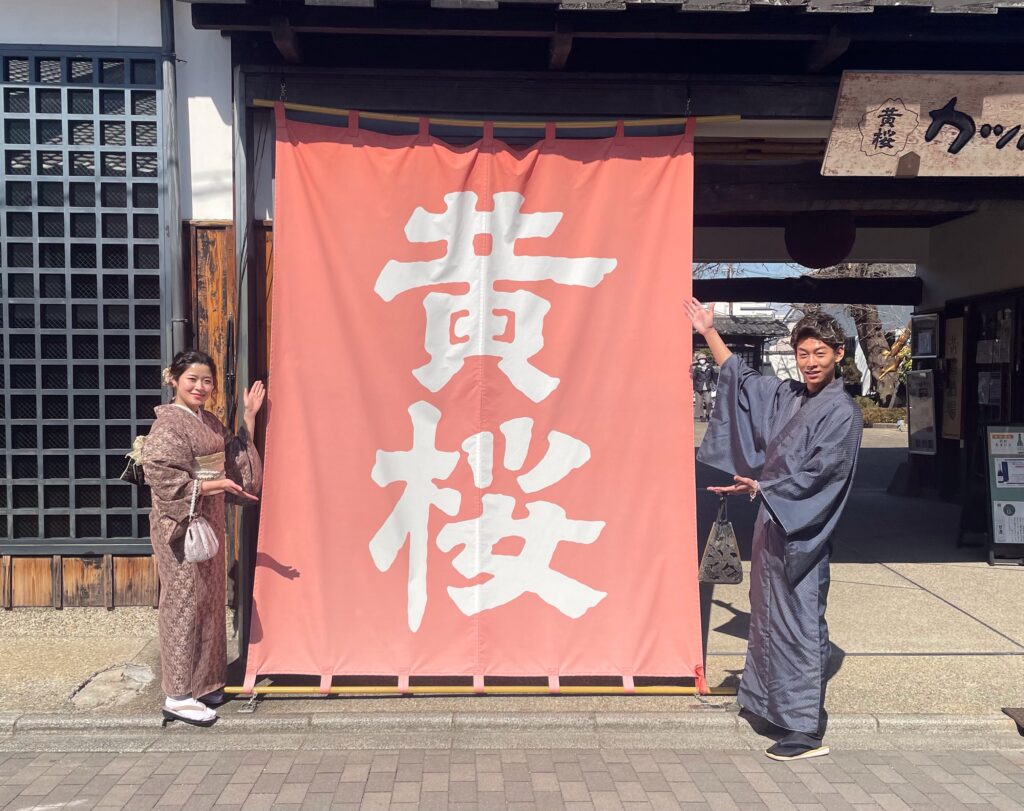
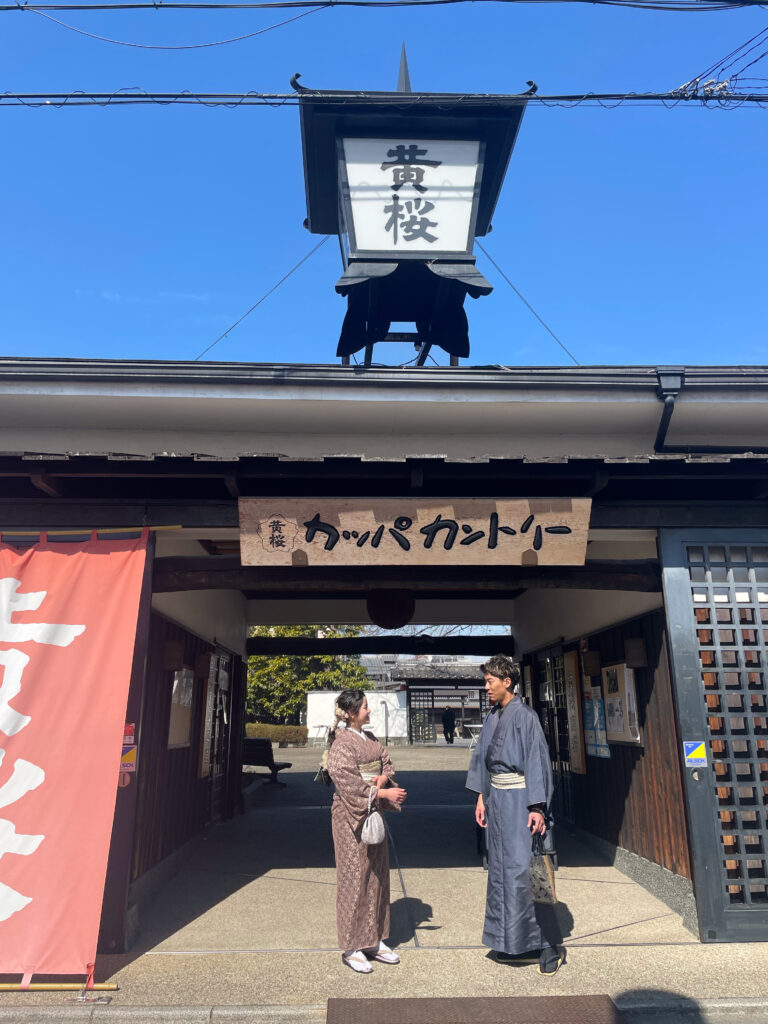
Recommended Date Course 6 from Fushimi Inari: Fushimi Ai Bridge
Fushimi Ai Bridge
Have you all seen this movie?
The title is quite impactful, isn’t it?
The Fushimi Ai Bridge is a rare Y-shaped bridge that spans the branch point of the Horikawa River and the Uji River tributary. In the movie, it was used as the school route for Hanae Minami and Takumi Kitamura.
It was also featured on the poster, so many of you might have seen it.
During cherry blossom season, which is a famous sightseeing spot in Fushimi, taking photos here with cherry blossoms, just like the characters in the movie, would be wonderful.
It’s a 15-minute train ride from Fushimi Inari Station on the Keihan Line, and then a 9-minute walk from Chushojima Station.

Recommended Date Course 7 from Fushimi Inari: Teradaya
Teradaya
Teradaya is the historic inn where the "Sakamoto Ryoma Attack Incident" took place, a pivotal event involving the late Edo period hero Sakamoto Ryoma. It is also a popular sightseeing spot in Fushimi.
According to legend, during a late-night bath, Ryoma’s wife, Oryo, noticed over 100 Fushimi magistrates outside while she was bathing. She alerted Ryoma while still naked. The scars from the sword wounds and gunfire from that attack can still be seen today, as they remain preserved at the site.
Visitors can also tour the bathhouse where Oryo was bathing, giving a vivid sense of the atmosphere at that time. Currently, the site is open for sightseeing, and it functions as a ryokan (traditional inn) where you can stay overnight. If you're interested, staying there allows you to experience the historical ambiance firsthand.
It’s a 15-minute train ride from Fushimi Inari Station on the Keihan Line, and then a 5-minute walk from Chushojima Station.
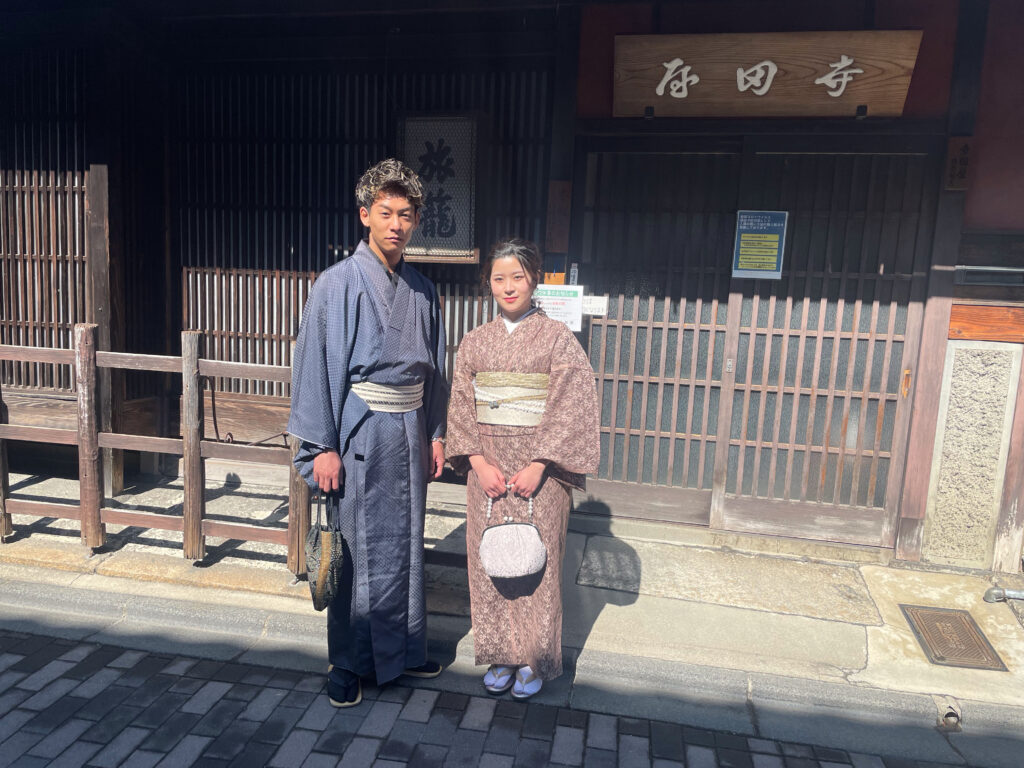
Recommended Date Course 8 from Fushimi Inari: Fushimi Minato Park
Fushimi Minato Park
There is a bronze statue of Sakamoto Ryoma and his wife, Oryo, in this park.
Sakamoto Ryoma and Oryo are said to be Japan's first honeymooners.
They are believed to have departed from Teradahama, taking a Sanzokubune (three-ton boat), and headed to Kyushu Kirishima, which was recommended by Takamori Saigo.
It is also said that Ryoma was heavily injured during an attack, and the trip was for his recuperation. This warm story reflects the love and support that Oryo showed for Ryoma, just like during the Teradaya attack incident.
Spending a relaxing time in the park, gazing at the scenery like this lovely couple, might be a wonderful idea.
It is a 15-minute train ride from Fushimi Inari Station on the Keihan Electric Railway, and then a 3-minute walk from Chushojima Station.
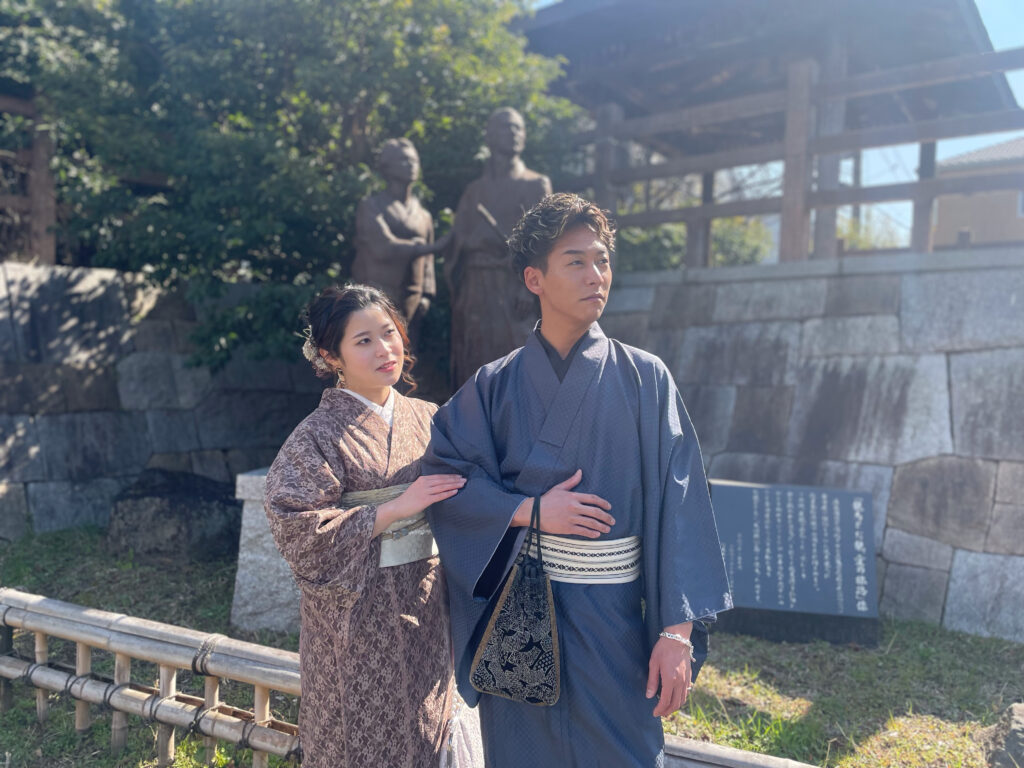
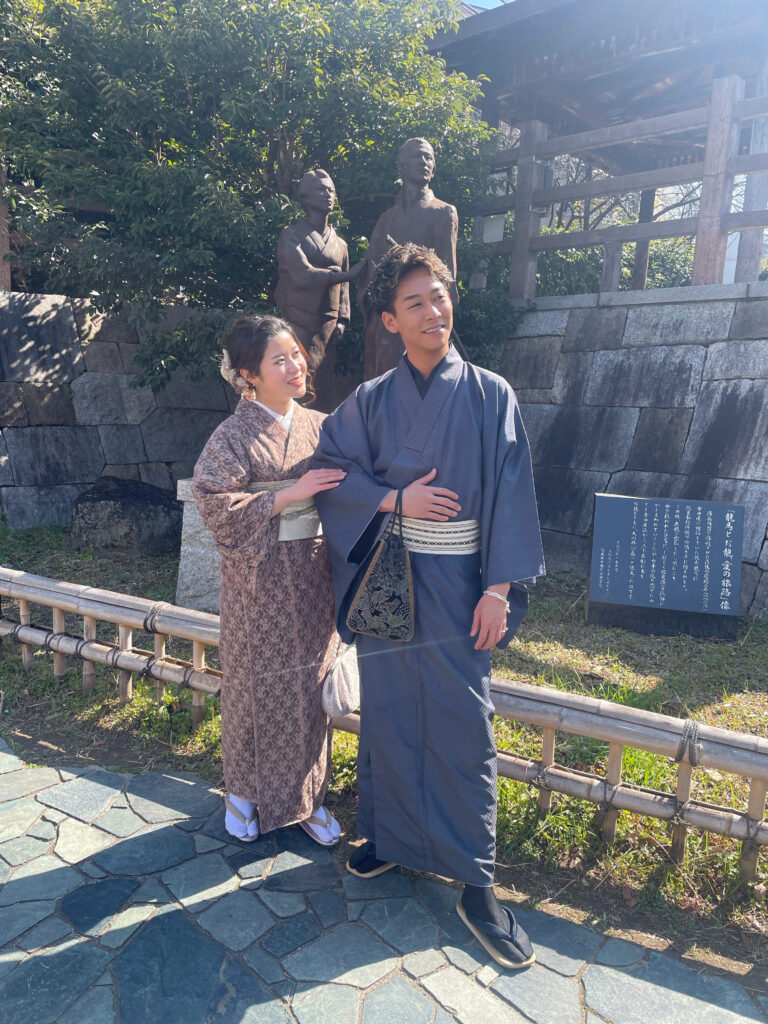
Recommended Date Course 9 from Fushimi Inari: Jonan-gu Shrine
Jonan-gu Shrine
Since its founding 1,200 years ago, when it was established to pray for the protection of the city and the peace of the nation, Heian Shrine has been guarding Kyoto alongside the Heian Capital.
It has protected the capital of Kyoto, together with Heian Shrine, which is dedicated to safeguarding the city.
The four guardian deities are: the North's Genbu (Black Tortoise) at Kamigamo Shrine, the East's Seiryū (Azure Dragon) at Yasaka Shrine, the West's Byakko (White Tiger) at Matsuō Taisha, and the South's Suzaku (Vermilion Bird) at Jōnan Shrine.
Additionally, from late February, the 'Weeping Plum and Camellia Festival' features around 150 weeping plum trees blooming in the garden, creating a stunning and beautiful sight that makes visitors want to come back every year.
Under the trees blooming with red and white plums, beautifully maintained moss spreads out, and fallen red camellia flowers create a picturesque scene, perfect for taking photos!
During the festival, visitors can enjoy offerings of "Ume-gae Kagura" performed by shrine maidens, purchase ornamental plants, and enjoy matcha (green tea).
When you think of Kyoto, matcha naturally comes to mind, doesn't it?
Please enjoy your matcha while taking in the fragrant plum blossoms and the scenic view of the garden.
Access:
15-minute walk from Takeda Station on the Karasuma Subway Line
15-minute walk from Kintetsu Takeda Station
3-minute walk from Jōnan Shrine East Exit bus stop
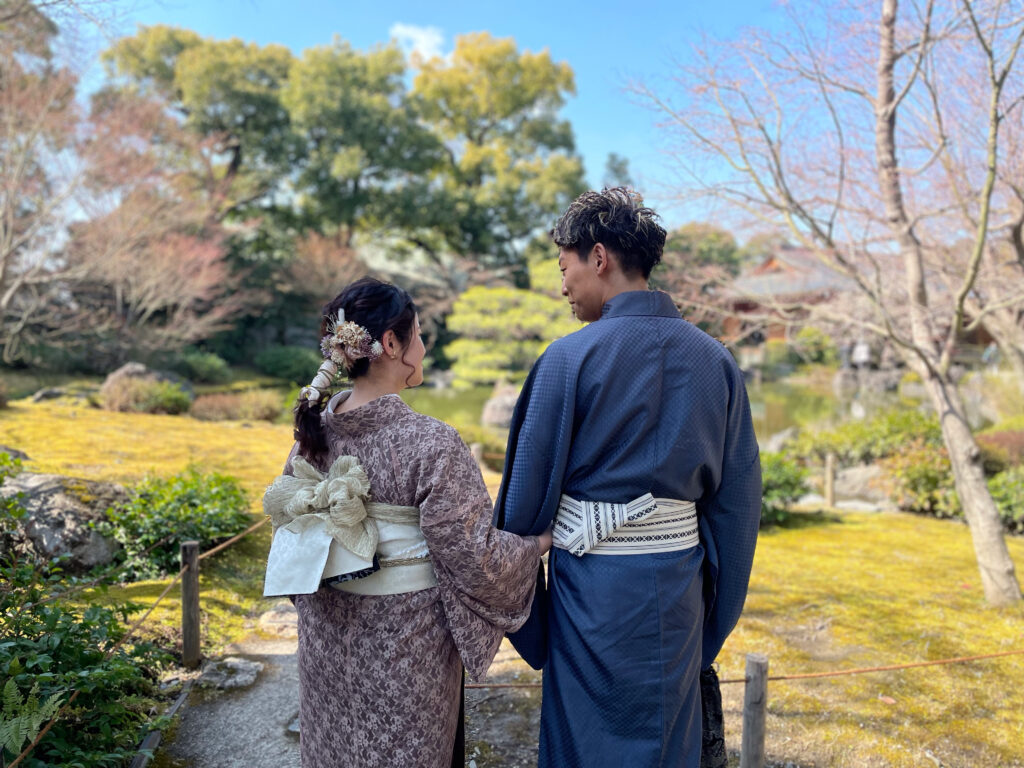
Recommended Date Course 10 from Fushimi Inari:
Fushimi-Moriyama Shrine
Fushimi-Moriyama Shrine
Fushimi-Moriyama Shrine is famous as the guardian deity of victory. Many visitors come here for related reasons such as horse racing and exam success.
At this shrine, there is a spring of famous water within the grounds, known as "Fuji no Mizu" (Water of Fuji) because it is unique and never the same as any other. Locals often come to collect this delicious water, which speaks to its high quality!
During the rainy season, in the "Ajisai-en" (Hydrangea Garden) located within the shrine grounds, approximately 3,500 hydrangea plants bloom vibrantly. Various types of hydrangeas blossom, and there are even some shaped like hearts! Finding such a unique flower is quite rare, so if you spot one, consider yourself lucky!
Please try to find it!
It takes about 5 minutes by Keihan train from Fushimi Inari Station to Sumiyoshi Station, and then a 7-minute walk.
"Both locations are within easy reach by train from Rental Kimono Okamoto Fushimi Inari Branch. Since they are concentrated in the same area, you can enjoy exploring while walking around. While the popular spots are great, I think it would be wonderful to wear kimono for a slightly more mature date course and enjoy the history and scenery of Kyoto and Fushimi. Please do visit and experience it for yourself♪"
【Author of this article】
Rental Kimono Okamoto Fushimi Inari Store
45-1 Fukasoinarichu-no-machi, Fushimi-ku, Kyoto City, Kyoto Prefecture, 612-0807, Japan
TEL: 075-634-8900
HP: www.okamoto-kimono.com
Instagram: rentalkimonookamoto
Tiktok: @rentalkimono_okamoto
Facebook: Facebook/rentalkimonookamoto
X(formerly Twitter ):@okamotokimono
lit.link: lit.link/rentalkimonookamoto
Arashiyama Shop
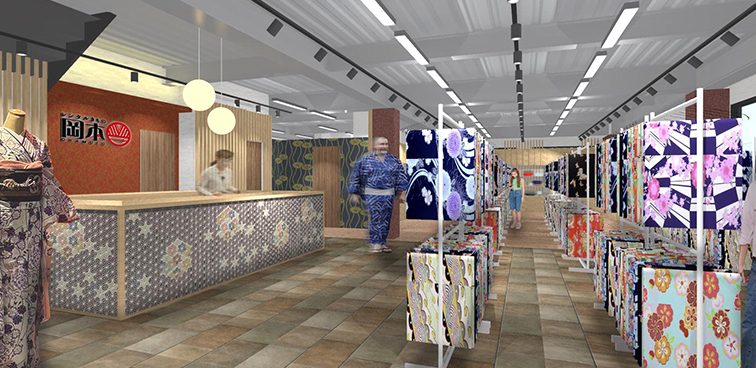
48-4 Saga Tenryuji Kitatsukurimichicho, Ukyo-ku, Kyoto 616-8374, Japan
Phone: +81-75-950-0805 / Fax: +81-75-950-0806 / E-mail: arashiyama@okamoto-kimono.com
Nearest Station: Arashiyama (Randen Line) / JR Saga-Arashiyama Station
Rental Kimono Okamoto - Fushimi Inari shop
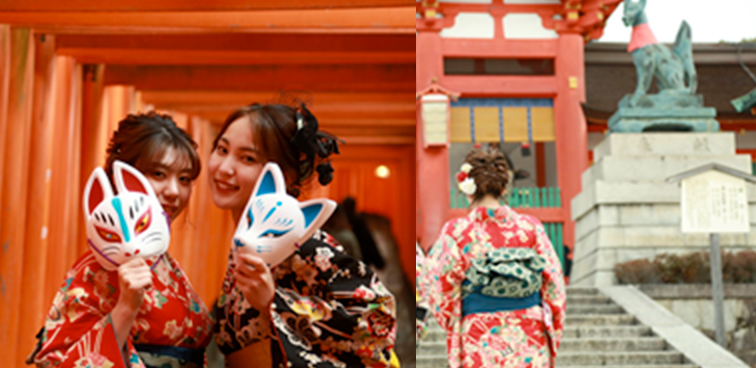
45-1, Fukakusa Inarinakanocho, Kyoto Shi Fushimi Ku, Kyoto Fu, 612-0807, Japan
Tel. +81-75-634-8900 / FAX +81-75-634-8901 / E-mail E-mail fushimiinari@okamoto-kimono.com
Nearest Station: JR Inari Station / Keihan Fushimi Inari Station
Rental Kimono Okamoto Gion Shop
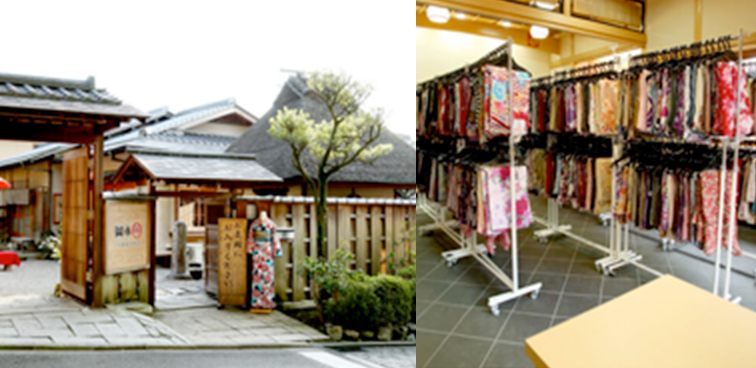
523 Washiocho, Higashiyama-ku, Kyoto 605-0072
Tel. +81-75-531-7890 / FAX +81-75-531-8383 / E-mail gion@okamoto-kimono.com
Nearest stop: City Bus Gion Stop
Rental Kimono Okamoto Kiyomizu Higashiyama Shop
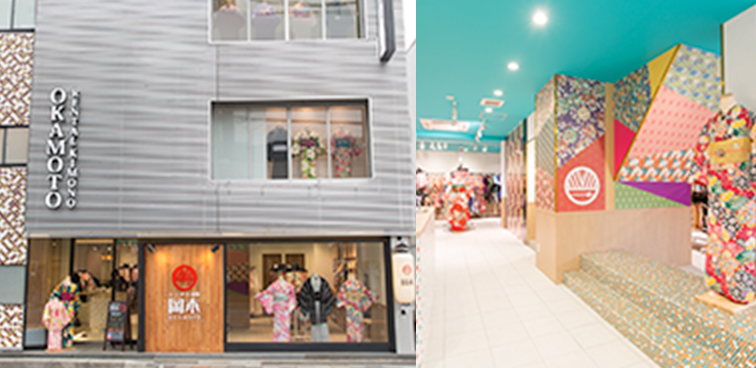
110-9 Tatsumicho, Higashiyama-ku, Kyoto 605-0855
Tel. +81-75-533-8900 / FAX +81-75-533-8910 / E-mail kiyomizuhigasiyama@okamoto-kimono.com
Nearest stop: City Bus Kiyomizumichi stop
Rental Kimono Okamoto Kiyomizu Shop
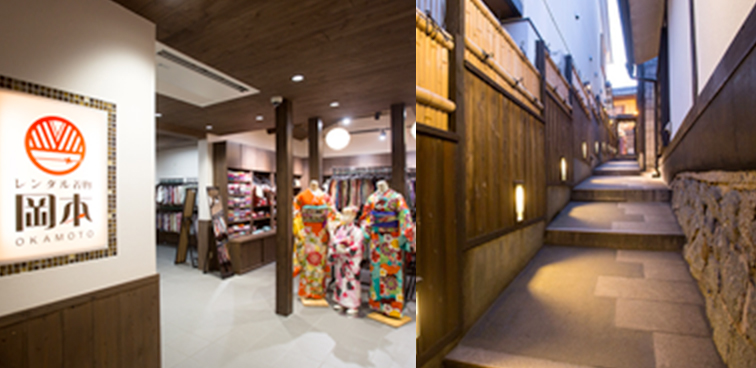
2-237-1-1 Kiyomizu, Higashiyama-ku, Kyoto 605-0862
Tel. +81-75-525-7115 / FAX +81-75-533-8960 / E-mail kiyomizuzaka@okamoto-kimono.com
Nearest stop: City Bus Kiyomizumichi stop
Rental Kimono Okamoto Main Shop
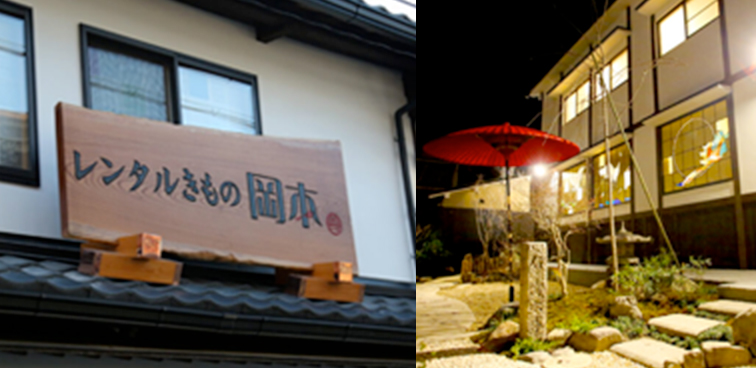
6-546-8 Gojohashihigashi, Kyoto Higashiyama-ku, Kyoto 605-0846
Tel. +81-75-532-1320 /Fax +81-75-532-1480 / E-mail honten@okamoto-kimono.com
Nearest stop: City Bus Gojozaka Stop
Rental Kimono Okamoto Yasaka Jinja Shop
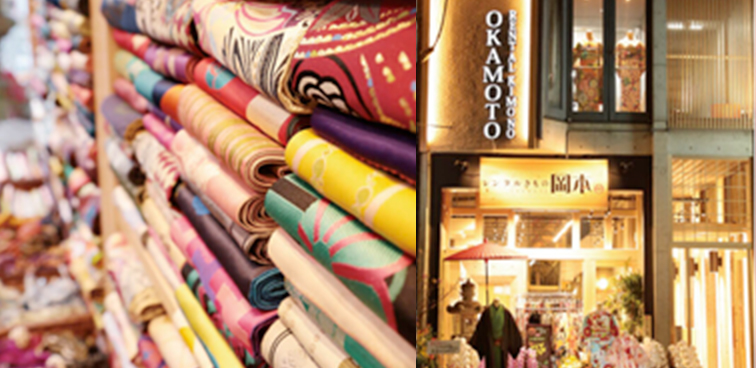
301-1 Gioncho, Higashiyama-ku, Kyoto 605-0073
Tel. +81-75-532-0510 / FAX +81-75-532-0511 / E-mail yasakajinja@okamoto-kimono.com
Nearest stop: City Bus Gion Stop
You can read a feature story about our store, Kyoto and kimono.
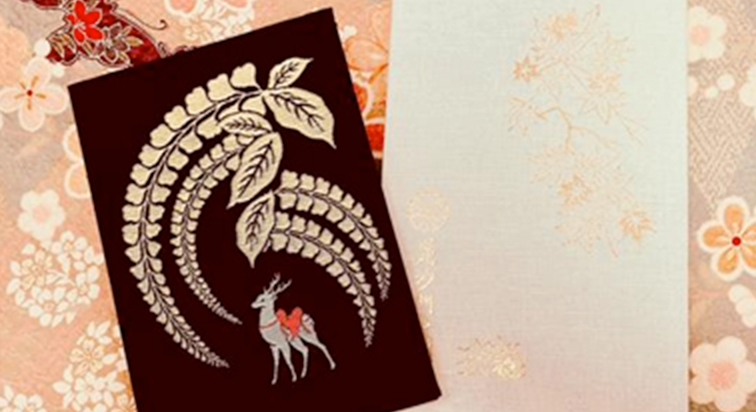
We are introducing various information on proper way of choosing kimono and others to match. Also you can access to our articles about regional, sightseeing information of Kyoto you can refert to before travelling to Kyoto.
You can read articles about various information on Kyoto.
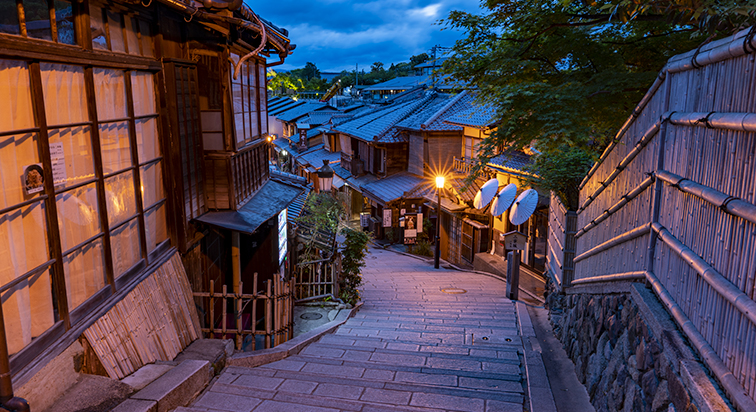
Our kyoto resident staffs post articles about history, sightseeing, regional information of Kyoto. You may enjoy sightseeing even more by deepening your knowledge through this article.
You can view articles about kimono all written by us.
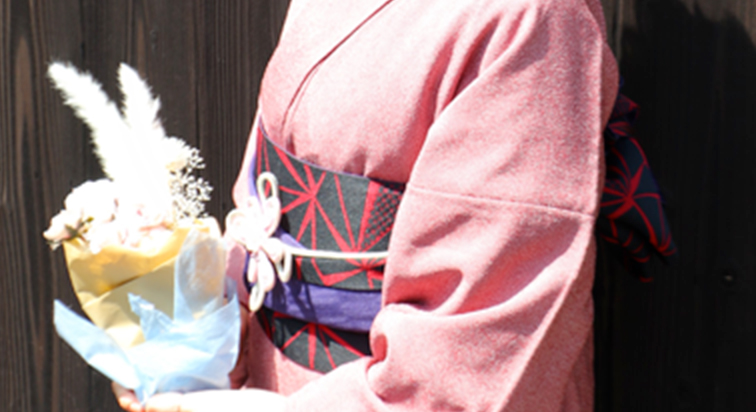
It features various articles about kimono such as history, manner, common sense and a proper way of matching kimono. They will add fun to your going out in kimono.
More articles introducing the area around the shop are available here.
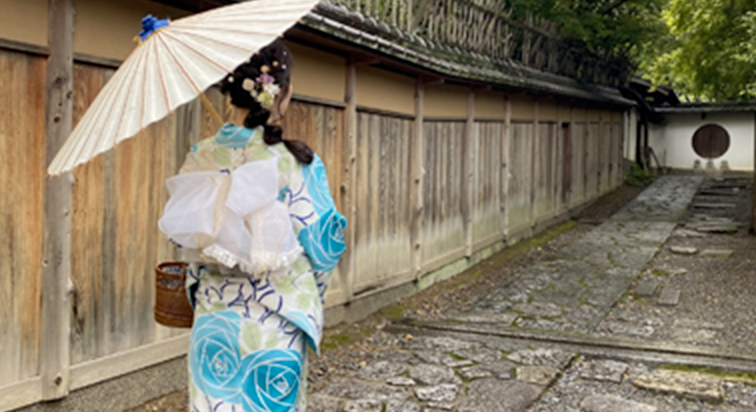
Please refer to our articles about famous tourist spots, hidden spots, and the latest information on stores in Kyoto. It is updated by our staffs who are familiar with the area.







